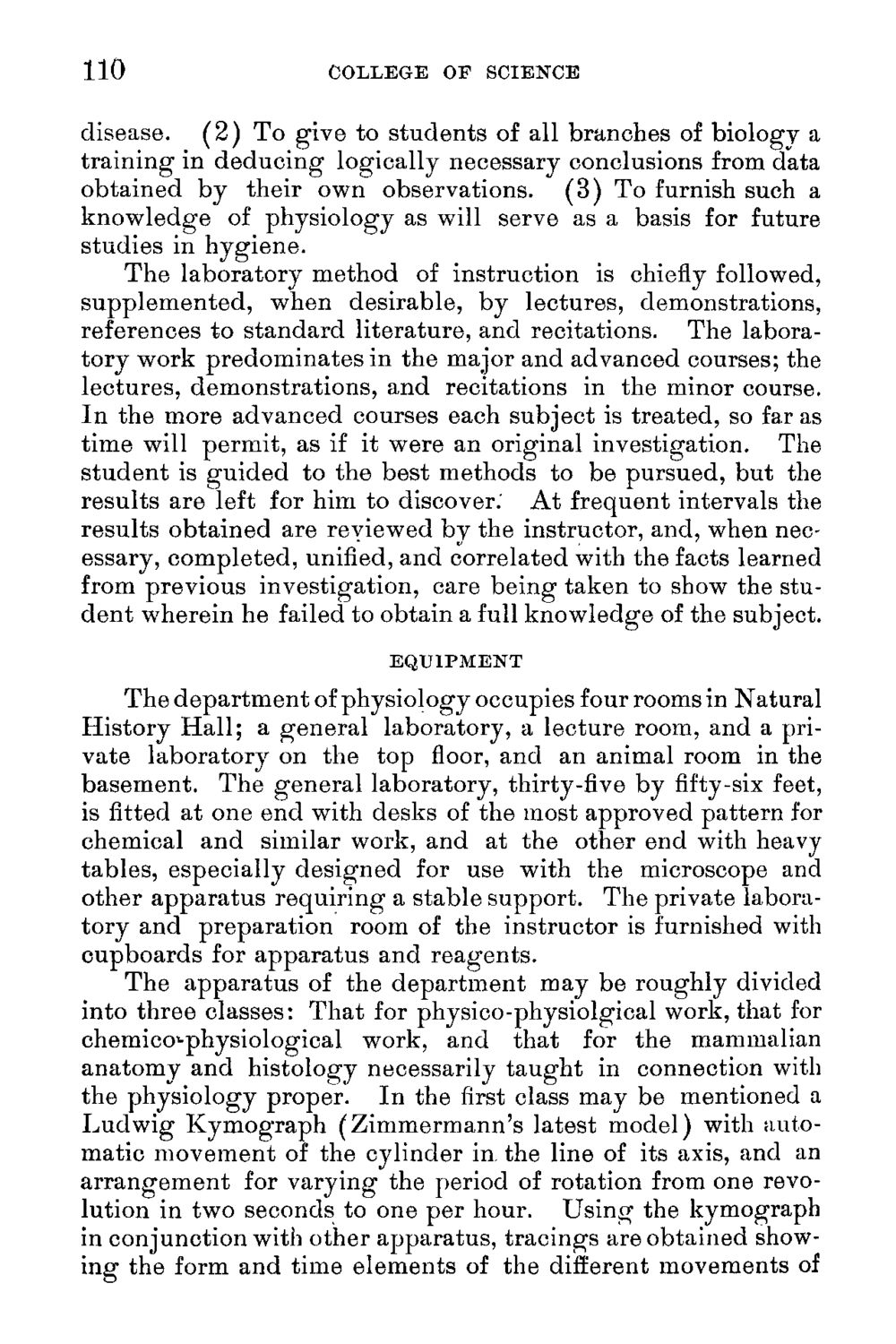| |
| |
Caption: Course Catalog - 1895-1896
This is a reduced-resolution page image for fast online browsing.

EXTRACTED TEXT FROM PAGE:
110 COLLEGE OF SCIENCE disease. (2) To give to students of all branches of biology a training in deducing logically necessary conclusions from data obtained by their own observations. (3) To furnish such a knowledge of physiology as will serve as a basis for future studies in hygiene. The laboratory method of instruction is chiefly followed, supplemented, when desirable, by lectures, demonstrations, references to standard literature, and recitations. The laboratory work predominates in the major and advanced courses; the lectures, demonstrations, and recitations in the minor course. In the more advanced courses each subject is treated, so far as time will permit, as if it were an original investigation. The student is guided to the best methods to be pursued, but the results are left for him to discover: At frequent intervals the results obtained are reyiewed by the instructor, and, when necessary, completed, unified, and correlated with the facts learned from previous investigation, care being taken to show the student wherein he failed to obtain a full knowledge of the subject. EQUIPMENT The department of physiology occupies four rooms in Natural History Hall; a general laboratory, a lecture room, and a private laboratory on the top floor, and an animal room in the basement. The general laboratory, thirty-five by fifty-six feet, is fitted at one end with desks of the most approved pattern for chemical and similar work, and at the other end with heavy tables, especially designed for use with the microscope and other apparatus requiring a stable support. The private laboratory and preparation room of the instructor is furnished with cupboards for apparatus and reagents. The apparatus of the department may be roughly divided into three classes: That for physico-physiolgical work, that for chemico'-physiological work, and that for the mammalian anatomy and histology necessarily taught in connection with the physiology proper. In the first class may be mentioned a Ludwig Kymograph (Zimmermann's latest model) with automatic movement of the cylinder in, the line of its axis, and an arrangement for varying the period of rotation from one revolution in two seconds to one per hour. Using the kymograph in conjunction with other apparatus, tracings are obtained showing the form and time elements of the different movements of
| |